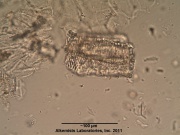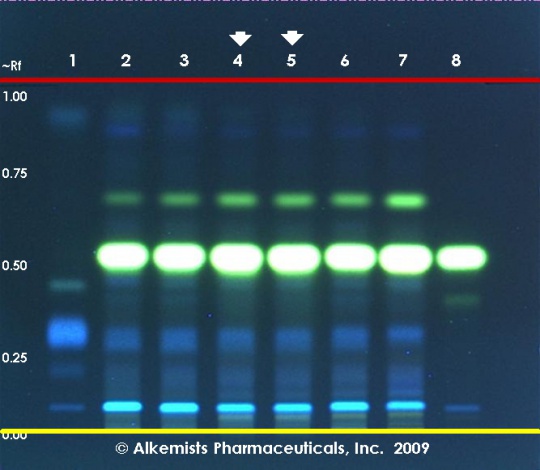Hydrastis canadensis (root)
(Introduction removed) |
(Various title corrections, Source additions) |
||
| Line 1: | Line 1: | ||
| + | {{DISPLAYTITLE:''Hydrastis canadensis'' (root) }} | ||
=Nomenclature= | =Nomenclature= | ||
| Line 11: | Line 12: | ||
|notes= }} | |notes= }} | ||
| − | =Macroscopic | + | =Botanical Voucher Specimen= |
| − | =Microscopic | + | =Organoleptic Characteristics= |
| + | |||
| + | =Macroscopic Characteristics= | ||
| + | =Microscopic Characteristics= | ||
{{Microscopy | source=Elan M. Sudberg, Alkemist Laboratories | {{Microscopy | source=Elan M. Sudberg, Alkemist Laboratories | ||
| companyimage= AP-LOGO-Laboratories Crop - Copy.jpg | | companyimage= AP-LOGO-Laboratories Crop - Copy.jpg | ||
| Line 25: | Line 29: | ||
| }} | | }} | ||
| − | = | + | =High Performance Thin Layer Chromatographic Identification= |
{{HPTLC | source=Elan M. Sudberg, Alkemist Laboratories | {{HPTLC | source=Elan M. Sudberg, Alkemist Laboratories | ||
| description=Golden Seal (root) (''Hydrastis canadensis'') | | description=Golden Seal (root) (''Hydrastis canadensis'') | ||
| Line 51: | Line 55: | ||
| }} | | }} | ||
| − | = | + | =Supplementary Information= |
| + | =Sources= | ||
| + | <references /> | ||
Revision as of 23:56, 15 March 2014
Contents |
Nomenclature
Hydrastis canadensis L. Ranunculaceae
Standardized common name (English): goldenseal
Botanical Voucher Specimen
Organoleptic Characteristics
Macroscopic Characteristics
Microscopic Characteristics
|
High Performance Thin Layer Chromatographic Identification
|
Golden Seal (root) (Hydrastis canadensis) Lane Assignments Lanes, from left to right (Track, Volume, Sample):
Reference materials used here have been authenticated by macroscopic, microscopic &/or TLC studies according to the reference source cited below held at Alkemists Laboratories, Costa Mesa, CA. Stationary Phase Silica gel 60, F254, 10 x 10 cm HPTLC plates Mobile Phase ethyl acetate: methanol: HCOOH: water [10/2/1.2/0.6] Sample Preparation Method 0.25g+4 ml 80% MeOH snct 1/2 hr cntrfg/dcnt, add 2mL MeOH, vrtx&cntrfg,dcnt&qs to 20mL w MeOH Detection Method Ninhydrin Reagent -> UV 365 nm Reference see American Herbal Pharmacopoeia & Therapeutic Compendium
|
Supplementary Information
Sources
- ↑ Elan M. Sudberg, Alkemist Laboratories http://www.Alkemist.com
- ↑ Elan M. Sudberg, Alkemist Laboratories http://www.alkemist.com


